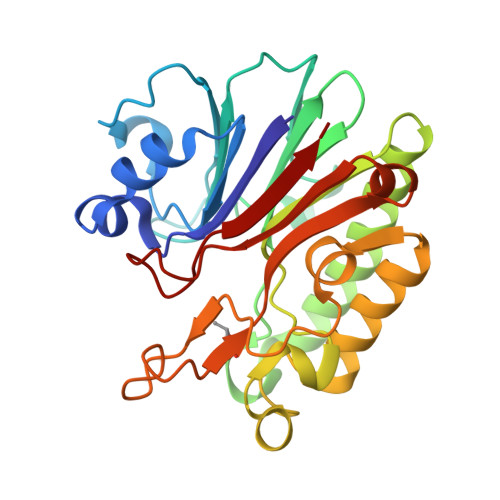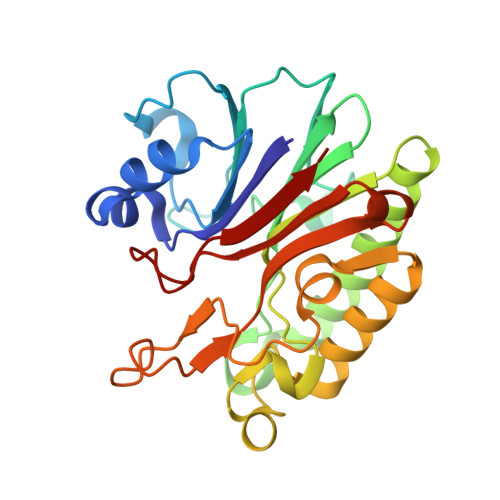Crystal structure of the apurinic/apyrimidinic endonuclease XthA (HP1526 protein) from Helicobacter pylori.
Dinh, T., Dao, O., Killivalavan, A., Ngo, D., Lee, K.H.(2023) Biochem Biophys Res Commun 663: 8-15
- PubMed: 37116395
- DOI: https://doi.org/10.1016/j.bbrc.2023.04.047
- Primary Citation of Related Structures:
8IGI - PubMed Abstract:
Helicobacter pylori is a bacterium that causes gastritis, peptic ulcer disease and adenocarcinoma while infecting human stomach. In the stomach H. pylori is under stresses caused by reactive oxygen and nitrogen species from host immune response, which causes oxidative DNA damage. The DNA damage in single base is repaired by base excision repair (BER) and/or nucleotide incision repair (NIR) pathways. H. pylori retains a minimal set of enzymes involved in the BER and NIR pathways. The HP1526 protein is a single apurinic/apyrimidinic (AP) endonuclease homologous to E. coli Xth protein but little is known for its structure up to now. In this study, the structure of the recombinant HP1526 protein from H. pylori (HpXthA) has been determined at a high resolution of 1.84 Å. From the structural analysis the HpXthA was found to belong to the Xth-like AP endonuclease family carrying the common fold of a central bilayer β-sheet flanked by α-helices with a divalent metal ion bound. A Mn 2+ ion and a 1,3-butanediol were unusually found and modeled around the active site. Structural and sequence comparisons among the AP endonucleases show well-conserved residues for metal and DNA binding and for catalysis. Interestingly, the presence of a small polar residue Ser201 of the HpXthA commonly found in NIR-proficient AP endonucleases instead of an aspartate residue in NIR-deficient enzymes suggests that the HpXthA retain a nucleotide incision repair activity.
Organizational Affiliation:
Department of Convergence Medical Science (BK21Plus), Gyeongsang National University, Jinju, 52727, Republic of Korea; Department of Microbiology, School of Medicine, Gyeongsang National University, Jinju, 52727, Republic of Korea.





















